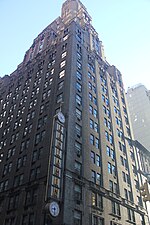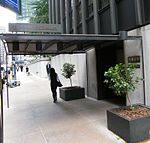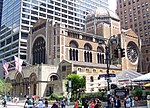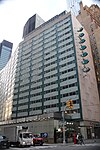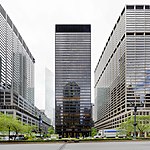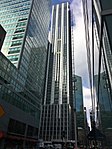General Electric Building
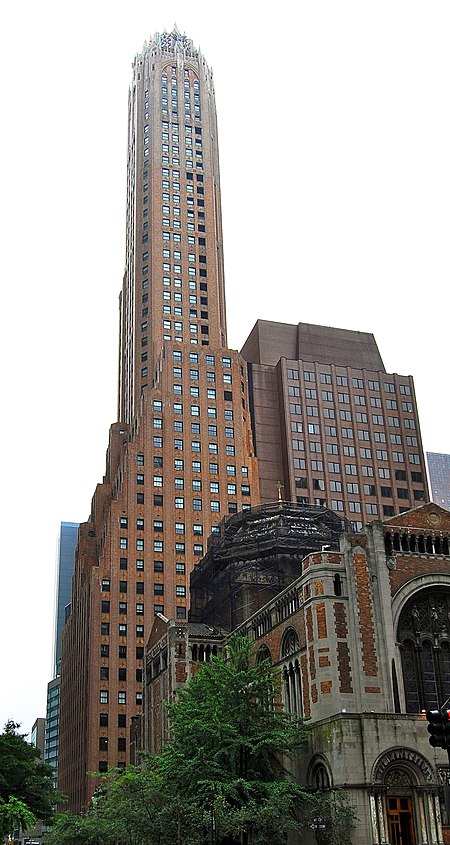
The General Electric Building (also known as 570 Lexington Avenue) is a skyscraper at the southwestern corner of Lexington Avenue and 51st Street in Midtown Manhattan, New York City. The building, designed by Cross & Cross and completed in 1931, was known as the RCA Victor Building during its construction. The General Electric Building is sometimes known by its address to avoid confusion with 30 Rockefeller Plaza, which was once known as the GE Building. 570 Lexington Avenue contains a 50-floor, 640-foot-tall (200 m) stylized Gothic octagonal brick tower, with elaborate Art Deco decorations of lightning bolts showing the power of electricity. The tower is set back from the round-cornered base with elaborate masonry and architectural figural sculpture. The building was designed to blend with the low Byzantine dome of the adjacent St. Bartholomew's Episcopal Church on Park Avenue, with the same brick coloring and architectural terracotta decoration. The crown of the building, an example of Gothic tracery, is intended to represent electricity and radio waves. On the corner above the building's main entrance is a clock with the cursive GE logo and a pair of disembodied silver arms holding bolts of electricity. Plans for the building were announced in 1929, and it was completed two years later. The project was originally commissioned for RCA, then a subsidiary of General Electric (GE). RCA moved to 30 Rockefeller Plaza midway through construction, and 570 Lexington Avenue was conveyed to GE as part of an agreement in which RCA and GE split their properties. GE had its headquarters at 570 Lexington Avenue between 1933 and 1974, and retained ownership until 1993, when the building was donated to Columbia University. The building was extensively renovated by Ernest de Castro of the WCA Design Group in the 1990s. It was designated a New York City landmark in 1985 and was added to the National Register of Historic Places in 2004.
Excerpt from the Wikipedia article General Electric Building (License: CC BY-SA 3.0, Authors, Images).General Electric Building
Lexington Avenue, New York Manhattan
Geographical coordinates (GPS) Address External links Nearby Places Show on map
Geographical coordinates (GPS)
| Latitude | Longitude |
|---|---|
| N 40.757222222222 ° | E -73.9725 ° |
Address
General Electric Building (570 Lexington Avenue)
Lexington Avenue 570
10037 New York, Manhattan
New York, United States
Open on Google Maps



